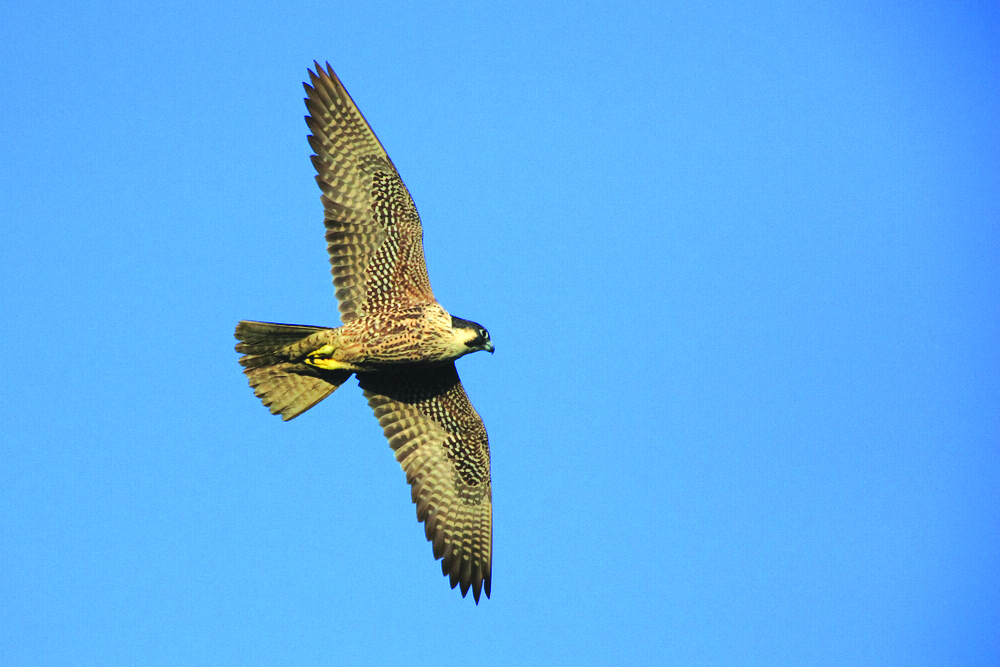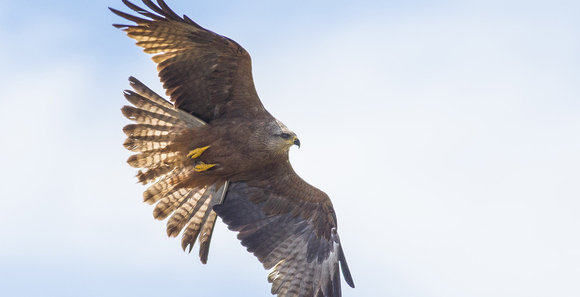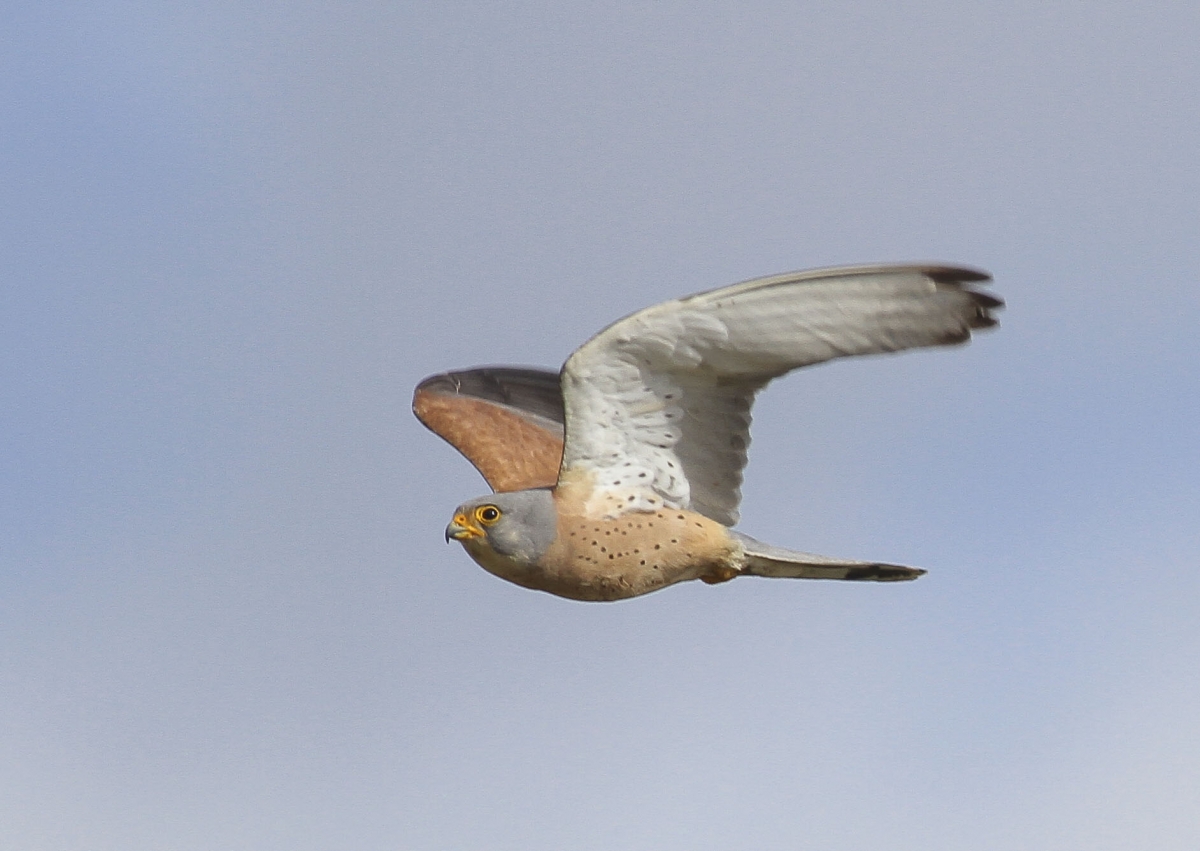- Home
- Things to do
- Birdwatching
Birdwatching
- Nature Reserve, Upper Rock
MIGRATION
As the Strait of Gibraltar is the narrowest crossing point for birds migrating to and from Europe and Africa, the Rock offers unrivalled bird watching opportunities. 315 species of birds have been recorded, many of which are migratory. Gibraltar, at the head of the Strait, is a prominent headland, which accumulates migrants during the passage periods. The vegetation on the Rock, unique in southern Iberia, provides a temporary home for many species of migratory birds that stop to rest and feed before continuing migration for their crossing over the desert and sea. In spring they return to replenish before continuing their journeys to Western Europe, journeys that may take them as far as Greenland or Russia.
BIRD RINGING
Migration is a challenge within nature conservation work since many populations of birds regularly move over large areas, and problems en route or in the wintering quarters can result in declining breeding populations in areas far away. Many migratory birds are declining in numbers and detailed survey information about the annual movements, including important stop-over sites (i.e Gibraltar) and winter quarters, is a top conservation priority. This is where bird ringing comes in. The Gibraltar Ornithological & Natural History Society (GONHS) Ringing station & Field observation centre at Jew’s Gate engages in a bird ringing programme during Spring & autumn every year. The ringing being undertaken at this observatory is important in order to identify changes in the migration patterns of bird species, particularly in relation to factors such as climate change.
GIBRALTAR
During the late 19th century, it was quite possible to observe breeding species now absent from Gibraltar. Species such as Osprey & Bonelli’s Eagles used to breed on the cliffs on the eastern side of the rock. Sadly, these have now become extinct as a breeding species due to a combination of poisoning, disturbance, and the surge in Yellow-legged Gull population. Others such as Raven, Jackdaw and Black Wheatear disappeared as a result of habitat loss after the east side great sand slopes were destroyed and converted to a water catchment, covered by corrugated iron sheeting, a habitat which has since been regenerated. The Raven did make a comeback for several years in the recent past but is now again an irregular passage migrant.
Gibraltar lies in a strategic location for birdwatching. Migration of soaring birds & seabirds occurs almost year-round and the sheer numbers can be impressive in the peak seasons March-May & August-October. Birds of prey such as Honey Buzzards, Black Kites, Short-toed Eagles, Booted Eagles, Griffon Vultures, White Storks, Cory’s Shearwater & Audouin’s Gull pass in their thousands, with smaller numbers Egyptian & Griffon Vultures, Marsh, Hen and Montagu’s Harriers, Sparrowhawk, Common Buzzards, Ospreys, Eleonora’s Falcon, Black Storks and others. Regular seabirds include Cory's and Balearic Shearwaters, Northern Gannets, Great Skuas, Mediterranean, Black-headed, Lesser Black-backed and Audouin’s Gull, Black & Sandwich Tern.
RESIDENT & BREEDING SPECIES
Because of the lack of natural fresh water streams and rivers in Gibraltar, a lot of the species you would expect to see across the border in nearby Spain often associated with such habitats such as Grey Wagtails, Nightgales, Cetti’s Warbler and others, are generally absent and only ever encountered on the rock during passage periods. Current resident and summer breeding species include European Shags, the only mainland site in Europe for Barbary Partridges, Peregrines Falcon, Common & Lesser Kestrels, Common, Pallid & Alpine Swifts, Blue Rock Thrush, House
Martin, Eagle Owl and thousands of Yellow-legged Gulls. A plethora of smaller songbirds such as Spotted Flycatcher, Sardianian Warbler, Blackcap, Blackbird, Greenfinch, Serin, Zitting Cisticola and many others also breed.
PASSAGE MIGRANTS
Spring & autumn Regular passage migrants include, Bee-eater, Hoopoe, Great Spotted Cuckoo, Turtle Dove, Northern & Black-eared Wheatears, Subalpine & Spectacled Warblers, Willow Warbler, Western Olivacious Warbler, Whinchat, Common Redstart, Tree & Tawny Pipit, Grasshopper Warbler, Reed Warbler, Orphean Warbler, Melodious Warbler, Ortolan Bunting to name just a few! More scare migrants include Lanner Falcon, Roller, Stone Curlew and others. For a more detailed species migration timetable in Gibraltar visit
WINTER
Wintering species include Alpine Accentor, Black Redstart, Robin, Tawny Owl, Woodcock, Skylark, Thekla Larks, Meadow Pipit, Dartford Warbler, Firecrest Zitting Cisticola, Stonechat and in the past have included species such as Wallcreeper & Yellow-browed Warbler.
VAGRANTS
Gibraltar’s strategic location and proximity to the African continent make it an ideal location to observe unusual species and this has resulted in sightings of vagrant species such as Purple Sandpiper, Common Eider, Rüppell’s Vulture, Pallid Harrier, Long-legged Buzzard, Lesser Spotted Eagle, Lanner Falcon, Allen’s Gallinule, Seebohm’s & Desert Wheatear, Calandra Lark, Siberian Chiffchaff & Red-breasted Flycatcher, Tristrams Warbler, African Chaffinch amongst many others. If you do happen to come across a species you suspect is unusual in Gibraltar, please contact GONHS on the link provided below, together with any photographs & descriptions.
SPECIES BY MONTHS
February - March.
Very good for the start of bird of prey migration including Black Kite, Short-toed Eagle & Egyptian Vulture. Cory’s Shearwaters in the straits.
March – April.
During late March to April there is a good variety of passage raptors including Black Kite, Egyptian Vulture, Short-toed Eagle, Marsh and Montagu’s Harriers, Buzzard, Booted Eagle and Osprey. Smaller spring migrants include Subalpine & Spectacled Warblers & Black-eared Wheatear and others.
April – May.
Are excellent for migrating passerines and large falls occur in the Strait area after bad weather. Those wanting to observe the greatest variety of species should visit during mid-April to mid-June. At this time birds are still migrating north and most of the summer visitors have arrived to breed. Among the interesting migrants these months include Montagu’s Harrier, Scops Owl, Red-necked Nightjar, Bee-eater, Roller, Hoopoe, Short-toed Lark, Tawny Pipit, Rufous Bush Robin, Northern & Black-eared Wheatears, Rock Thrush, Western Olivaceaous Warbler, Melodious Warbler, Spectacled Warbler, Subalpine Warbler, Orphean Warbler, Willow & Bonelli’s Warblers, Pied Flycatcher, Common Redstart, Woodchat Shrike, Ortolan Bunting and many others.
June.
June is good for Honey Buzzard and for other late bird of prey passage involving a lot of non-breeding individuals from species such as Griffon Vulture, Short-toed Eagle, Black Kite.
July – August.
July and August are probably the best seabird-watching months. There are large numbers of Balearic and Cory’s Shearwaters offshore and there is a large westward movement of thousands of Audouins’s Gull. Other seabirds likely at this time include Slender-billed Gull, Gull-billed Tern & Black Tern. July to August is also the peak of the southward migration of the White Stork, Black Kite and Common Swift and can be particularly impressive at times.
August – October.
The last week of August and the first ten days of September are the best for large numbers of raptors on migration, especially Honey Buzzard, Egyptian Vulture and Montagu’s Harrier. Black Storks and Short-toed and Booted Eagles follow at the end of September and in early October. The main passerine activity in autumn is in late September to mid-November when large falls occur after bad weather. Finch migration during October and early November is spectacular.
November - February.
The winter period is considered to be from November – February. The end of February is also an interesting time as summer migrants from the Africa arrive and the winter species are still present.
LINKS OF INTEREST
AVIANTOURS - For birdwatching tours, bird & nature photography, digiscoping and nature walks in Gibraltar, Spain & Morocco www.aviantours.net
GONHS - Gibraltar Ornithological and Natural History Society website: www.gonhs.org
Photos taken by Andrew Fortuna www.aviantours.net (Unauthorized use of images strictly prohibited)
Discover other attractions in the area
Apes' Den / Barbary Macaques
Nature Reserve, Upper Rock
Mon-Sun 09:30-19:00
Included in Nature Reserve Fee
St. Michael's Cave
Nature Reserve, Upper Rock
Mon-Sun 09:30-19:00
Included in Nature Reserve Fee



 English
English Spanish
Spanish French
French Italian
Italian German
German





